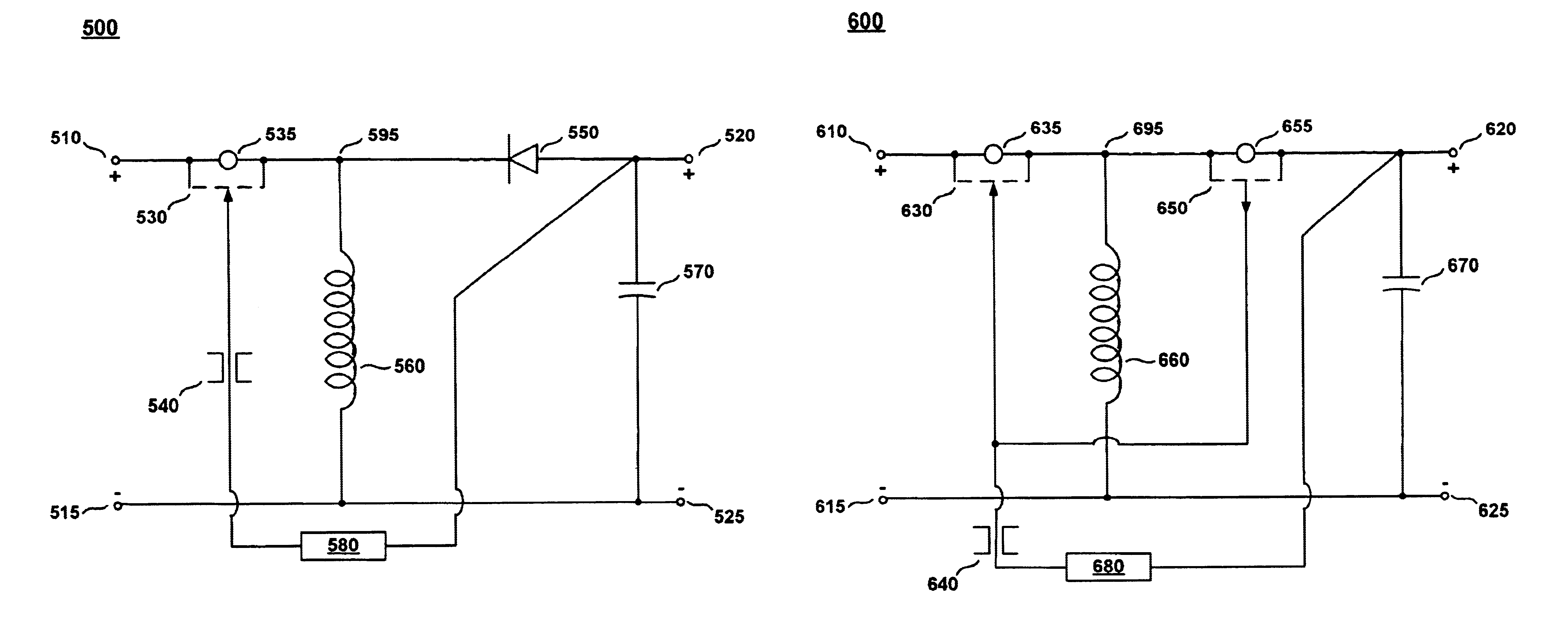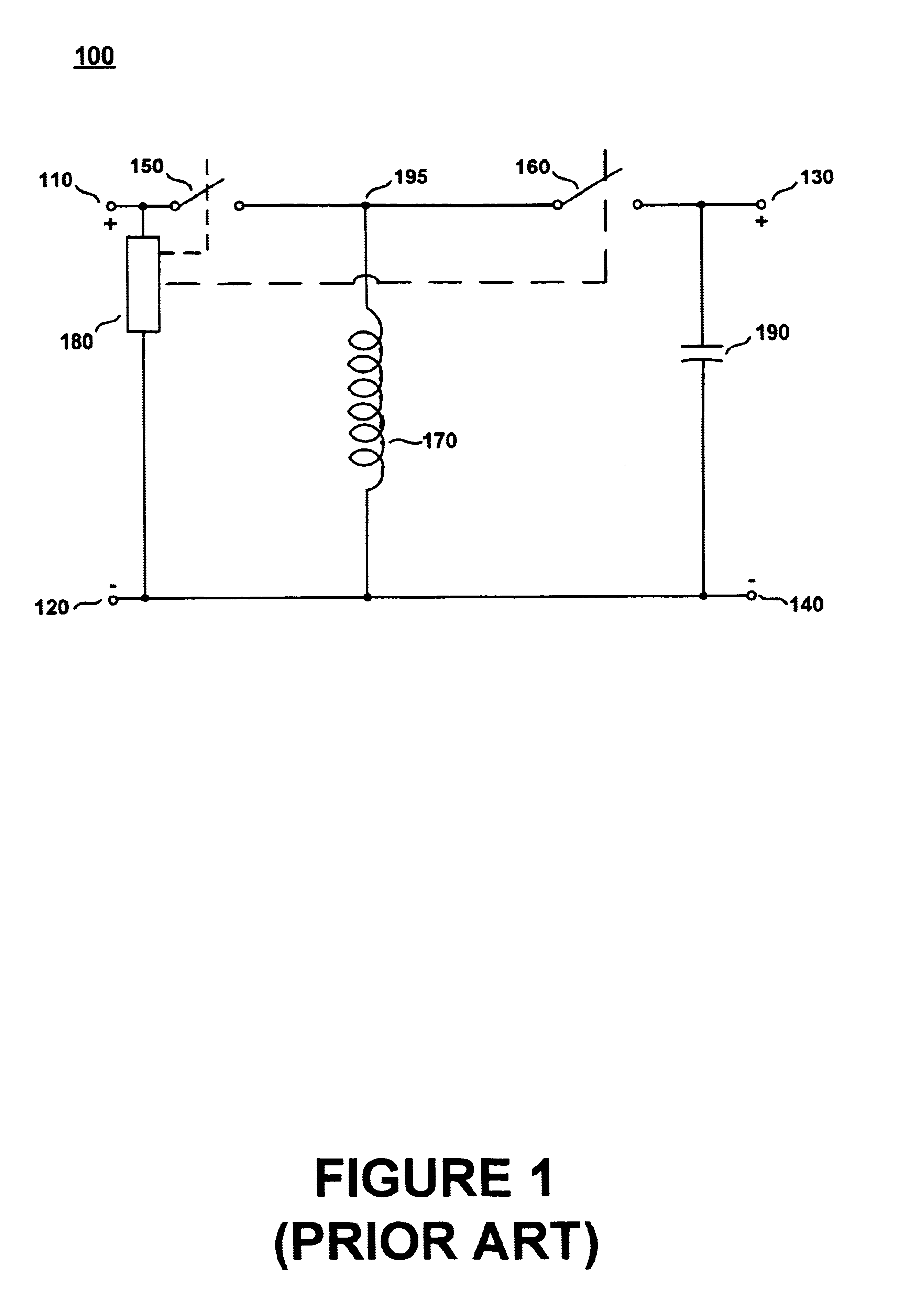Buck-boost circuit with normally off JFET
a buck-boost circuit and circuit technology, applied in the direction of power conversion systems, instruments, process and machine control, etc., can solve the problems of slow switching speed, limited frequency, certain amount of energy loss, etc., and achieve short switching transition times, small internal resistance, and small internal resistance
- Summary
- Abstract
- Description
- Claims
- Application Information
AI Technical Summary
Benefits of technology
Problems solved by technology
Method used
Image
Examples
Embodiment Construction
[0019]In the following detailed description of the present invention, a buck-boost circuit with normally off JFET, numerous specific details are set forth in order to provide a thorough understanding of the present invention. However, it will be obvious to one skilled in the art that the present invention may be practiced without these specific details. In other instances well known methods, procedures, components, and circuits have not been described in detail as not to unnecessarily obscure aspects of the present invention.
[0020]The generic diagram for a dc-dc buck-boost converter circuit 100 is shown in FIG. 1 as a two-port network having a positive input terminal 110, a positive output terminal 130, and a negative input terminal 120 connected to a negative output terminal 140. A capacitor 190 placed across the output terminals filters the dc output voltage and also acts as an electrical load. A first switch150 is connected between the positive input and an internal node 195. A s...
PUM
 Login to View More
Login to View More Abstract
Description
Claims
Application Information
 Login to View More
Login to View More - R&D
- Intellectual Property
- Life Sciences
- Materials
- Tech Scout
- Unparalleled Data Quality
- Higher Quality Content
- 60% Fewer Hallucinations
Browse by: Latest US Patents, China's latest patents, Technical Efficacy Thesaurus, Application Domain, Technology Topic, Popular Technical Reports.
© 2025 PatSnap. All rights reserved.Legal|Privacy policy|Modern Slavery Act Transparency Statement|Sitemap|About US| Contact US: help@patsnap.com



